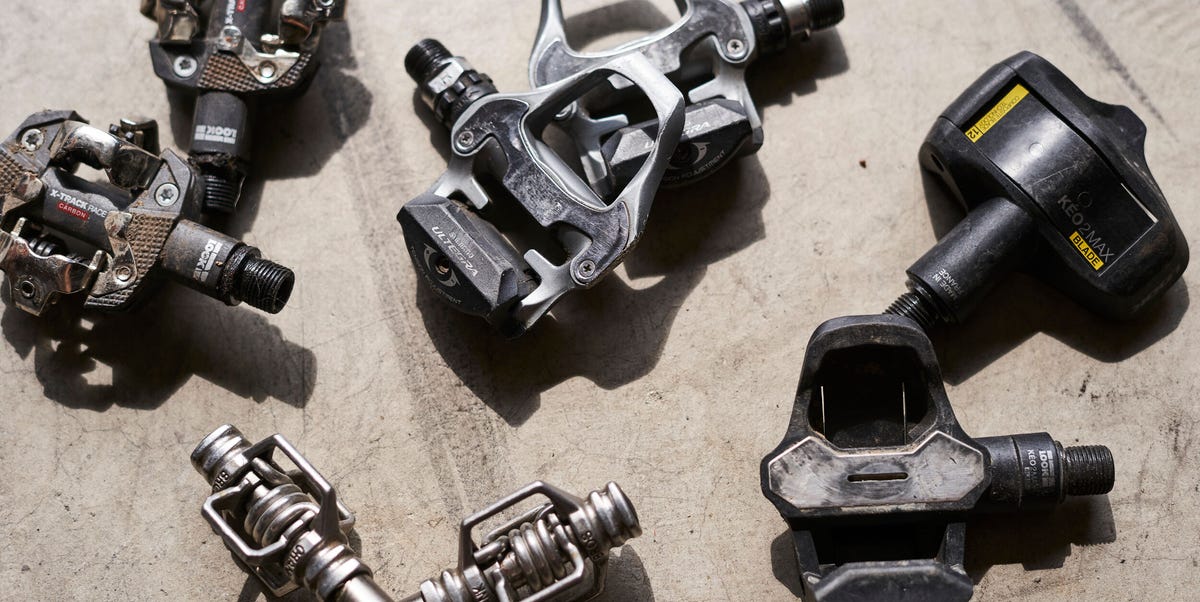Why Are They Called Clipless Pedals? The Truth and Why You Should Try Them

Understanding Clipless Pedals
For many beginner road, gravel, and mountain bike riders, using clipless pedals is a rite of passage. These pedals, often referred to as clip-in, click-in, or SPDs, offer a more secure connection between a cyclist’s feet and the bike. Riding with clipless pedals can improve efficiency by increasing power transfer and allowing riders to pull up with each pedal stroke while also pushing down as on traditional flat pedals.
However, selecting the right clipless pedals and shoes for your riding style can seem overwhelming. Manufacturers offer dozens of pedal options and hundreds of compatible shoes. This guide aims to simplify the process, helping you choose the right ones and confidently get out on the road or trail.
Why Are They Called Clipless?
The term "clipless" might seem contradictory since you do clip into them. However, the term refers to an older pedal type that used toe clips and straps. Before clipless pedals became popular, riders used metal or plastic cages (clips) attached to the front of the pedals, along with leather or nylon straps to secure their feet. Road racers also used notched cleats to lock their shoes to the pedals.
In the mid-1980s, mechanical attachment systems paired with special plastic cleats were introduced. These pedals securely attach the rider's shoes to the pedals and release quickly in case of a crash. Since these pedals did not use clips, they became known as clipless pedals.
Another common question is why many new bikes are sold without pedals. The reason is that many riders prefer specific brands of clipless pedals, making it easier and cheaper for bike brands not to include ones that most buyers won't want.
Choosing the Right Pedals
Before purchasing clipless pedals, consider your riding needs. While road pedals may be marketed as such, they might not be the best choice if you ride gravel or mountain bikes. Remember, it's your bike and your comfort. If you don't want to use clipless pedals, you don't have to. Many riders get on fine with traditional flat pedals.
There are two main types of clipless pedals: single-sided and dual-sided. Single-sided pedals are typically intended for paved surfaces and have a mechanical binding on one side. Dual-sided pedals, often referred to as SPDs, are better for any terrain and offer double the chance to engage the pedal.
Dual-sided pedals also provide better walkability, making them ideal for city rides, dismounting for obstacles, or walking steep hills. Some brands offer hybrid pedals that combine flat and clipless features, great for commuting or general-purpose riding.
Selecting the Right Shoes
Most clipless shoes are designed to work with either 2-bolt or 3-bolt cleats, not both. Ensure the shoes you choose are compatible with the pedals you will use. Typically, 3-bolt pattern shoes are sold as road shoes, while 2-bolt interfaces are found in mountain, gravel, or commuter collections.
When purchasing shoes, comfort is essential. A high price does not guarantee a good fit. Try shoes on at a local bike shop to confirm they fit and feel comfortable. Check the walkability if you plan to use the shoes for anything other than paved roads.
Closure Methods
Popular closure systems include laces, Velcro, and dials. Each has its advantages. Laces offer a classic look but cannot be adjusted on the bike. Velcro is lightweight and easy to adjust, while dials, like Boa systems, allow for microtuning your fit during a ride.
Installing Cleats and Setting Tension
Follow your pedal manufacturer’s guidelines when installing cleats. Start with float cleats rather than fixed-position variants. Set your pedal-release tension on the lower side initially and adjust as needed after becoming accustomed to riding with clipless pedals.
Practicing with Clipless Pedals
After installing your pedals and cleats, practice on easy terrain before heading onto busy roads or technical trails. An indoor trainer is a great place to start, allowing you to adjust cleat position or pedal tension. Once comfortable, practice clipping in and out on grassy fields to avoid falls.
Position your unclipped foot forward when stopping to make starting from a stop easier. Practice clipping in without looking down at your pedals to improve safety.
Maintaining Your Pedals
Keep your pedals and cleats in good working order. Check for wear or damage and clean them after each ride. Replace worn cleats to prevent unexpected releases or breaks. Use reputable retailers when purchasing replacement parts to ensure compatibility and quality.
Post a Comment for "Why Are They Called Clipless Pedals? The Truth and Why You Should Try Them"
Post a Comment